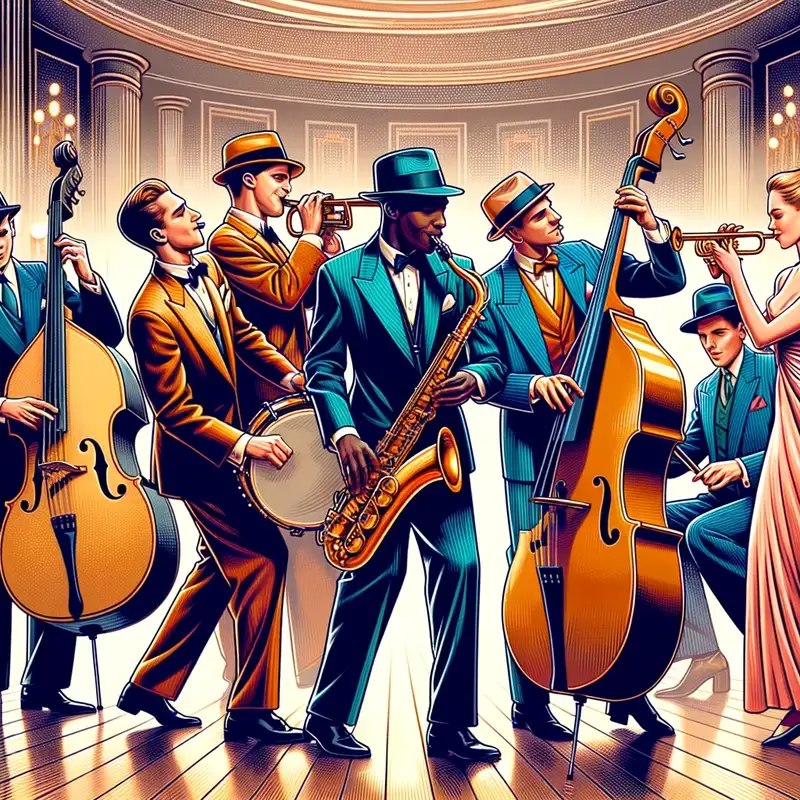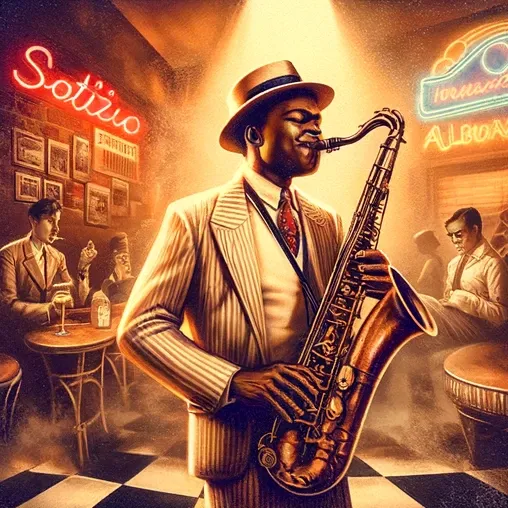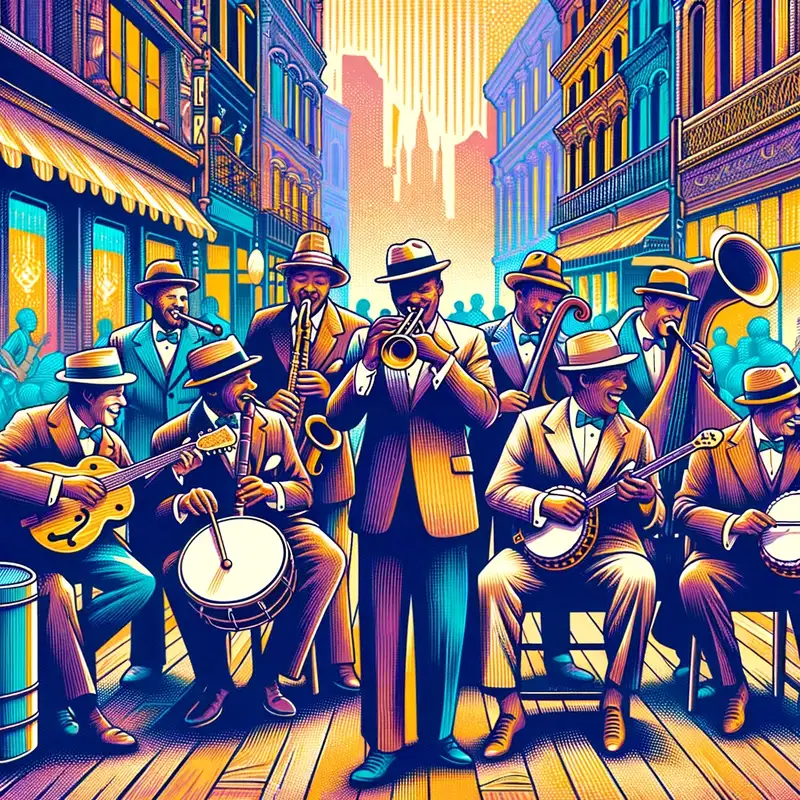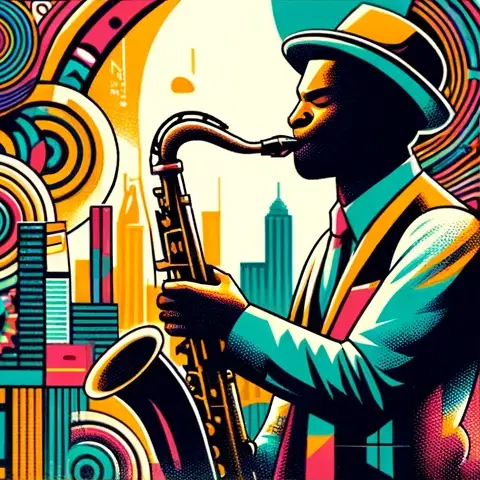Swing Jazz

Whether you’ve heard it from the crackly vinyl records of your grandparents or in the background of a movie set in the ’30s or ’40s, Swing Jazz is the soundtrack to a time when zoot suits were the rage and dance halls were packed to the brim.
Table of Contents
The Swing Era
The United States, the 1930s and 1940s. The country was dealing with the Great Depression and World War II. But even in these tough times, people needed an escape, and Swing Jazz was just the ticket. With its roots in the late 1920s, Swing really took off in the ’30s and dominated until the late ’40s. The swing era was marked by big bands, bigger dance floors, and the biggest personalities music had ever seen.
The Big Band
Forget the intimate jazz trios for a sec. Swing Jazz was all about the “Big Band” setup. We’re talking about a full ensemble of instruments:
- Saxophones: Alto, Tenor, and Baritone, these bad boys were the backbone.
- Trumpets: Up to four, adding that brassy zest.
- Trombones: Also up to four, for a balanced, richer sound.
- Rhythm Section: Piano, drums, double bass, and sometimes guitar.
Big Bands often had upwards of 15 members and played tightly arranged tunes with plenty of room for improvised solos.
The Songs You’ve Gotta Know
If you’re curious about which tunes can get your feet movin’ and your heart pumpin’, check out:
- “In the Mood” by Glenn Miller
- “Take the ‘A’ Train” by Duke Ellington
- “Sing, Sing, Sing” by Benny Goodman
- “A-Tisket, A-Tasket” by Ella Fitzgerald with Chick Webb’s Orchestra
The Legends
- Duke Ellington: An unrivaled composer and bandleader, and a piano maestro to boot.
- Benny Goodman: Known as the “King of Swing,” his 1938 Carnegie Hall concert is legendary.
- Glenn Miller: With hits like “In the Mood” and “Moonlight Serenade,” he was a household name.
- Count Basie: Renowned for his impeccable timing and bluesy swing feel.
- Ella Fitzgerald: Her voice was an instrument!
The Swing Dance Phenomenon
Swing Jazz wasn’t just about the music; it was the soundtrack to an entire dance craze. Styles like the Jitterbug and the Lindy Hop took over dance floors across the country. People flocked to ballrooms to show off their skills, often in dance competitions that were about as wild and energetic as the music itself.
Swing Jazz Today
Even though the Swing Era has long passed, its influence is far from forgotten. Swing music and dance styles have enjoyed revivals and remain popular in various subcultures. You’ll still find Swing Jazz bands and dance events happening around the world. And let’s not forget its impact on other genres, from rock ‘n’ roll to modern jazz and even hip-hop.


